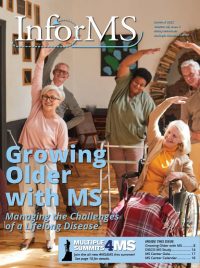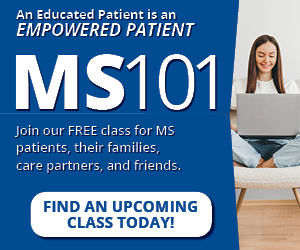Factors to be Included:
- MS diagnosis by 2010 McDonald criteria, any form of MS
- 55 years or older, no maximum age
- No relapse within last 5+ years
- No new MRI lesion in 3+ years
- Taking continuous approved DMT for 5+ years
- Taking most recent DMT for 2+ years
- No less than 75% of doses
- No greater than 28 days off drug
Factors to be Excluded:
- Use of non-approved DMT last 5 years
- Systemic steroids for MS within the last 5 years
- Other neurological disease that could mimic MS symptoms
Study Methods & Design:
- Pragmatic Clinical Trial, with insurance paying for medication and standard of care labs and MRI scans
- Randomized 1:1, so a 50:50 chance of being placed in either group
- Controlled (Continue vs. Discontinue DMT)
- Rater-Blinded for Relapse, Expanded Disability Status Scale (EDSS), and MRI
- Clinical visits and Patient Reported Outcomes collected every 6 months
- Brain MRI at Baseline and at 6 months, 12 months, and 24 months
- The primary outcome measured was the proportion of people with a new relapse or brain MRI lesion over the course of the study
Participant Data
- Included patient participants from 19 different centers across the United States
- More than 5,500 individuals were screened for potential participation
- 259 people actually took part in the complete study, and over 90% completed the study
- All participants were 55 or older; Average age of 63
- 128 participants were randomly selected to continue treatment and 131 to discontinue their treatment
- 83% of participants were female and 90% were white.
- The average number of years since onset of symptoms was 22 years
- The average time since last relapse was 13.9 years
- The average Expanded Disability Status Scale (EDSS) score was 3.4 on a 10-point scale. This is moderate disability
- Participants were on 8 different classes of DMTs: Interferons (β-1a andβ-1b), glatiramer acetate (Copaxone), Teriflunomide (Aubagio), Fingolimod (Gilenya), dimethyl fumarate (Tecfidera), natalizumab (Tysabri), ocrelizumab (Ocrevus)
- Average time in the study was 22 months per person
Statistics: Most drug studies try to show a new drug is better than placebo or perhaps another drug. This was the opposite; that is, we attempted to determine if the new treatment (stopping DMT) was no worse than the standard treatment (continuing DMT) within a certain level of tolerance. In this case, the assumption was about 2% of those remaining on drug would have either a new relapse or brain MRI lesion, and we would accept up to 8% more (total 10%) as being not significantly more in those discontinuing. This degree of tolerance is called the non-inferiority zone.




